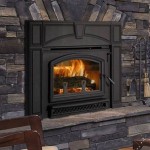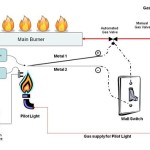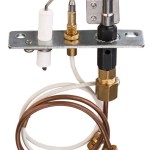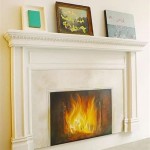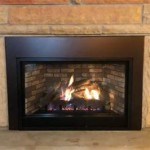Fireplace Walls: Inspiring Ideas for a Focal Point
The fireplace, traditionally a source of warmth and comfort, has evolved into a significant design element within the modern home. A fireplace wall serves not only as a functional component for heating but also as a potent focal point, capable of defining the character and style of an entire room. Numerous design options exist for transforming a typical fireplace into an eye-catching and visually appealing feature. Considerations should revolve around architectural style, material selection, and the incorporation of complementary design elements.
Material Selection and Texture
The selection of materials is paramount in creating a successful fireplace wall. The material influences the room’s overall aesthetic, affecting its perceived texture, color palette, and architectural style. Options range from natural stone and brick to sleek modern surfaces like concrete and tile. The choice should align with the homeowner's personal style and complement existing décor.
Natural stone offers inherent beauty and durability, adding a timeless and rustic charm to any room. Options include stacked stone, fieldstone, and flagstone, each providing a unique texture and visual appeal. Stacked stone, with its layered appearance, creates a dimensional and dramatic effect. Fieldstone, known for its rounded, organic shapes, lends a more natural and relaxed feel. Flagstone, characterized by its flat, irregular shapes, provides a more refined and contemporary appearance.
Brick, another classic material, can be used in various ways to create different looks. Traditional red brick imparts a warm and inviting atmosphere, while painted or whitewashed brick offers a more modern and cleaner aesthetic. Brick can be laid in various patterns, such as herringbone or running bond, adding visual interest to the wall. The versatility of brick makes it a suitable choice for numerous design styles, from traditional to industrial.
For a more contemporary and minimalist look, concrete is an excellent choice. Concrete fireplace walls can be poured in place, pre-cast, or achieved with concrete panels. Its smooth, monolithic surface provides a clean and understated elegance. Concrete can be stained or textured to add depth and character. Furthermore, its thermal properties make it an efficient material for retaining and radiating heat.
Tile offers a versatile and customizable option for fireplace walls. With a vast array of colors, patterns, and sizes available, tile can be used to create a multitude of designs. Subway tile, with its classic rectangular shape, provides a timeless and clean look. Mosaic tile, with its intricate patterns, adds a touch of artistry and sophistication. Large-format tiles, with their seamless appearance, create a modern and minimalist aesthetic. Tile is also a practical choice due to its durability and ease of maintenance.
Wood, while requiring appropriate safety precautions around a fireplace, can add warmth and texture to the surrounding wall. Reclaimed wood planks provide a rustic and eco-friendly option, showcasing the natural beauty of aged timber. Wood panels, stained or painted, offer a more refined and contemporary appearance. The use of wood should always comply with local building codes and fire safety regulations.
Design Integration and Architectural Style
The design of the fireplace wall should integrate seamlessly with the overall architectural style of the home. Whether the house is traditional, modern, rustic, or eclectic, the fireplace wall should complement and enhance the existing design elements. This involves considering the shape, size, and placement of the fireplace wall, as well as the surrounding décor.
In a traditional home, a fireplace wall might feature ornate detailing, such as carved wood mantels, decorative moldings, and classic marble or stone surrounds. The fireplace itself might be a traditional wood-burning model with a brick or stone interior. The overall effect should be one of timeless elegance and sophistication.
A modern home calls for a more minimalist and streamlined fireplace wall. Clean lines, simple shapes, and a lack of ornamentation characterize this style. A linear fireplace, often gas-powered, is a popular choice for modern homes. The surrounding wall might be clad in concrete, tile, or wood panels, creating a sleek and understated focal point. Color palettes are typically neutral, with a focus on texture and subtle variations in tone.
Rustic homes often benefit from fireplace walls that embrace natural materials and textures. Stone, brick, and reclaimed wood are common choices. A large, imposing fireplace with a rough-hewn stone surround can be a dramatic centerpiece in a rustic living room. The mantel might be made from a reclaimed wood beam, adding to the rustic charm. The overall aesthetic should be one of warmth, comfort, and connection to nature.
For eclectic homes, the fireplace wall can be a canvas for creativity and self-expression. A mix of materials, colors, and textures can be used to create a unique and personalized design. A fireplace wall might combine elements of different styles, such as a modern fireplace with a vintage mantel or a rustic stone surround with a contemporary tile accent. The key is to create a cohesive and visually appealing composition that reflects the homeowner's individual taste.
Beyond material and style, the size and placement of the fireplace wall also play a crucial role in its overall impact. A large fireplace wall can dominate a room, while a smaller fireplace wall might serve as a more subtle accent. The placement of the fireplace wall should be carefully considered to maximize its visibility and functionality. Ideally, the fireplace should be located in a central location where it can be enjoyed from multiple angles.
Incorporating Complementary Design Elements
The fireplace wall should not exist in isolation but rather be integrated with other design elements within the room. This includes considering the surrounding furniture, lighting, and accessories. The goal is to create a cohesive and harmonious space where the fireplace wall serves as the central focal point.
Built-in shelves and cabinets are a popular addition to fireplace walls. These elements provide storage and display space, helping to organize and declutter the room. Built-ins can be custom-designed to match the style of the fireplace wall, creating a seamless and integrated look. They can also be used to frame the fireplace, drawing attention to its central location.
Lighting plays a crucial role in highlighting the features of the fireplace wall. Recessed lighting can be used to illuminate the wall, accentuating its texture and color. Accent lighting, such as sconces or spotlights, can be used to highlight specific features, such as artwork or architectural details. A well-lit fireplace wall will create a warm and inviting atmosphere.
Artwork and accessories can be used to personalize the fireplace wall and add visual interest. A large statement piece of art can serve as a focal point above the mantel, complementing the design of the fireplace. Smaller accessories, such as candles, vases, and books, can be used to add warmth and personality to the space. The selection of artwork and accessories should be carefully considered to ensure that they complement the overall style of the room.
A mantel is a traditional element that can add character and charm to a fireplace wall. Mantels can be made from a variety of materials, such as wood, stone, or metal. They can be simple and understated or ornate and decorative. The choice of mantel should depend on the overall style of the room and the homeowner's personal preferences. A mantel provides a surface for displaying artwork, accessories, and personal mementos.
The surrounding furniture should be arranged to complement the fireplace wall. Sofas and chairs should be positioned to face the fireplace, creating a comfortable and inviting seating area. A rug can be used to define the space and add warmth to the room. The color and texture of the furniture should complement the design of the fireplace wall.
The incorporation of greenery can add a touch of nature and freshness to the fireplace wall. Plants can be placed on the mantel, on shelves, or in freestanding pots. Greenery can soften the hard lines of the fireplace and create a more inviting atmosphere. The selection of plants should depend on the amount of light available and the homeowner's personal preferences.
Ultimately, the design of a fireplace wall is a highly personal endeavor. The best results reflect the individual tastes and preferences of the homeowner, while also complementing the overall aesthetic of the home. Careful planning, thoughtful material selection, and the incorporation of complementary design elements are key to creating a fireplace wall that is both functional and visually stunning. The fireplace wall, when well-designed, becomes a central element to be enjoyed rather than simply a heating source.

Natural Stacked Stone Veneer Fireplace Ideas

Fireplace Ideas Stone Creek Furniture

Fireplace Ideas Stone Creek Furniture

40 Fabulous Fireplace Design Ideas For Any Budget Or Style

13 Stunning Fireplace Accent Wall Ideas For Your Home Carla Bast Design

10 Fireplace Mantel Decorating Ideas Full Service Chimney

Best Fireplace Decor Ideas For Your Home Family Handyman

40 Best Fireplace Décor Ideas Mantel

21 Fireplace Upgrades For Any Room Small Living Decor Feature Wall With

13 Stunning Fireplace Accent Wall Ideas For Your Home Carla Bast Design
Related Posts

